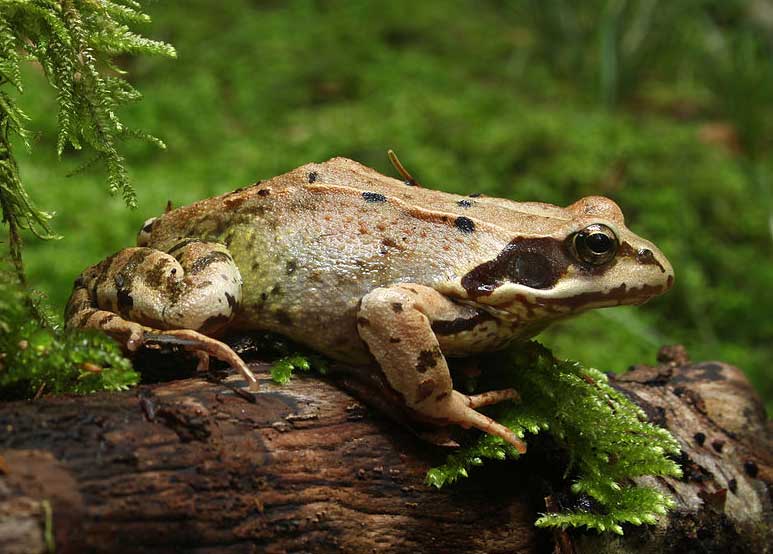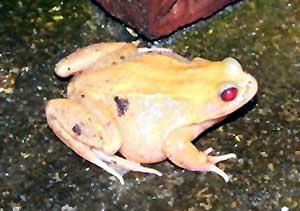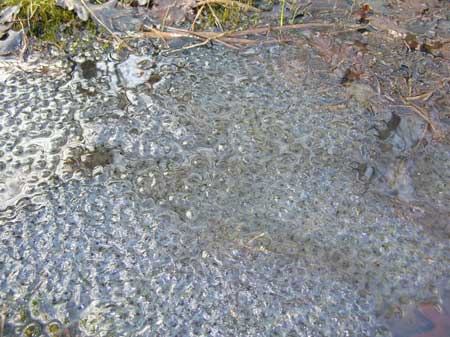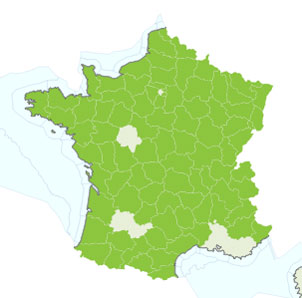Common Frog
Rana temporania
Grenouille Rousse
Common frogs are extremely variable in colour, typically they will be yellowish brown, brown or olive green, occasionally with a reddish appearance with a maximum length of 9 cm, spotted back with bold barring on the rear legs. Underneath the males are cream or pale yellow speckled with brown or grey, females more strongly coloured from pale yellow to orange. Back feet are partly webbed and there is a bold dark patch clearly visible behind the eyes which have a horizontal oval pupil. The male has two internal vocal sacs.
They have a vast range in Europe and North western Asia being found as far north as the Arctic circle. They are present in most of France except in the South west where they are either absent or scarce. They are found in all types of habitats outside of the breeding season often far from water, although juveniles may spend summer in or around water. Diet consists of small insects, grubs, earthworms, slugs etc. Generally nocturnal, especially when hot and dry although can be active day and night in mild or wet weather. Hibernation, if it takes place, begins in October and can finish in January; this is extremely variable depending on the region and climate conditions and increasingly they remain active throughout the year.
Reproduction starts immediately after hibernation, if any, ends and is very early, in fact hibernation may not occur at all in mild winters in some regions and spawning can commence as early as late December. Mating often brings together large numbers of frogs and spawn is laid in large clumps of 300 to 1000 eggs in shallow water, ponds, lakes, ditches and puddles.
As a result of this very early breeding many eggs are lost to freezing weather following a mild spell.





